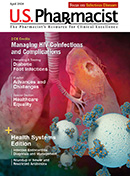Rochester, MN—Melatonin supplement use significantly increased over about a decade. What has raised concerns, however, is that the use of greater than 5 mg/day of the hormone, which was not reported before 2005-2006, jumped from 0.08% to 0.28% over the next decade, according to a new study.
"Exogenous supplementation of melatonin, one of the key hormones governing circadian rhythm, is indicated for the treatment of circadian rhythm sleep disorders and, despite insufficient evidence, is widely used as an over-the-counter sleep aid," according to a report in the Journal of the American Medical Association.
In addition, noted Mayo Clinic–led researchers, mounting evidence of melatonin's antioxidant and anti-inflammatory properties has spurred investigation of its therapeutic value in multiple diseases.
While the authors noted that melatonin is generally regarded as safe, they also noted that adverse effects have been reported and advised that data on long-term use and high-dose use are inadequate. "The heterogeneity in over-the-counter formulations further supports the need for a broader understanding of consumption of exogenous melatonin in the population," they added.
To provide more information, the study team examined reported prevalence and trends in the use of melatonin supplements among U.S. adults from 1999 through 2018. "Because the recommended dosage of melatonin typically does not exceed 5 mg/d, we additionally evaluated prevalence and trends in use of greater than 5 mg/d of melatonin," the study explained.
To do that, researchers used data from the 1999-2000 through 2017-2018 cycles of the National Health and Nutrition Examination Survey (NHANES), focusing on adults aged 20 years and older. For the analysis on greater than 5 mg/d of melatonin use, the study also excluded those reporting melatonin use but without daily dose information.
Included was information from 10 NHANES cycles for 55,021 adults that consisted of 52% women and with mean age of 47.5.
Results indicate that the overall reported weighted prevalence of melatonin use increased from 0.4% (95% CI, 0.2%-1.0%) in 1999-2000 to 2.1% (95% CI, 1.5%-2.9%) in 2017-2018 (linear P = .004), with an increase beginning in 2009-2010. Researchers reported that trends were similar across sex and age groups.
"Among U.S. adults, reported prevalence of melatonin supplement consumption significantly increased from 1999-2000 to 2017-2018 across all demographic groups," the authors pointed out. "Although it remained very low, prevalence of self-reported use of greater than 5 mg/d of melatonin also increased over time. These estimates may raise safety concerns, especially given that the actual content of melatonin in marketed supplements may be up to 478% higher than the labeled content and that evidence supporting melatonin use for sleep disturbances is weak."
Researchers call for more studies on the long-term effectiveness and safety of melatonin supplementation.
The content contained in this article is for informational purposes only. The content is not intended to be a substitute for professional advice. Reliance on any information provided in this article is solely at your own risk.






